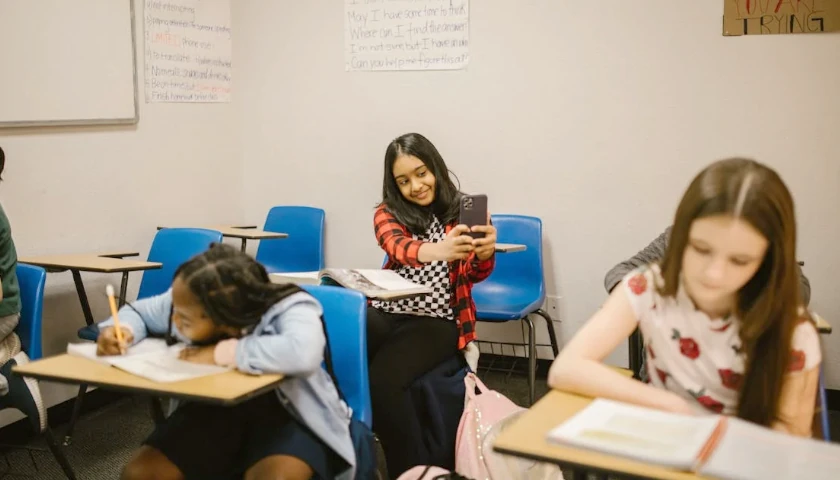by JC Bowman
Navigating the complexities of smartphone use in K-12 education is a collective effort that requires ongoing adaptation as technology evolves. We expect the Tennessee General Assembly to draft legislation on this issue in the next session. There is an increasing push to safeguard young individuals from spending too much time in front of screens.
States and public school districts are advocating cellphone bans in schools, driven by concerns about distractions and their adverse effects on student well-being. This growing trend should not just be about restrictions but about creating a more focused and conducive learning environment. Teacher buy-in is critical to this process.
The focus is on the potential positive impact on student interactions and social development, particularly among younger students. The debate is fueled by the recognition of the negative impact of excessive cellphone use on students’ mental health and academic performance. However, with the right policies in place, there is a significant potential for improvement, giving us hope for a better future.
State laws should empower local education agencies and schools with the authority to regulate their own students. This should be done in a way that values and incorporates community input, making each member of the audience feel valued and integral to the implementation of smartphone regulations.
Lawmakers in California and New York want to ban smartphones in public and charter schools. Some states, like Florida and Indiana, already regulate wireless device use in schools. Florida prohibits student access to social media on school-provided internet, except for educational purposes. The Village School of Naples in Florida reported improved student outcomes after banning mobile phone use during school hours and requiring participation in sports or arts programs. A school official noted a 94 percent improvement in mental well-being and significant academic gains, inspiring and motivating other schools to consider similar measures.
Advocates for phone-free schools argue that bans reduce distractions, combat cyberbullying, and promote healthier social interactions. Many campaigns highlight the mental health crisis linked to social media, especially smartphones. The U.S. Surgeon General suggested warning labels for social media due to its harmful effects on adolescents.
Conversely, opponents argue that enforcing no-phone rules can be challenging, limit opportunities for integrating technology into learning, and deprive students of essential skills for responsible device use. For example, children can use mobile medical apps targeting diabetes self-management. Significant pushback has come from parents concerned about their inability to contact their children during emergencies.
Critical considerations for schools contemplating a “no-phone” policy include the need for clear definitions regarding which devices are affected—whether just smartphones, tablets, and smartwatches are included. The implementation of the policy is essential.
Schools must decide between a complete ban or allowing restricted usage during specific times. While some institutions opt for a total ban, others may permit device use during non-structured periods, which requires careful management. Use of a device in a bathroom or locker room should not occur. Policies might mandate that students store devices in secured bags upon arrival or, alternatively, allow teachers to manage phone use within their classrooms. The bags should not cost the district but rather the person who uses the phone. This flexibility can help maintain a phone-free environment while accommodating necessary device use during commutes.
Any cell phone policy needs to be clearly defined—whether it targets all students or specific age groups and whether it is consistent across different divisions. Enforcement strategies must be clearly outlined, detailing how staff will manage checks for prohibited devices and handle confiscations.
Consequences for violating the policy should also be established, considering the student’s age and incorporating a tiered response for first-time and repeat offenses. Finally, the policy must allow for reasonable accommodation for students with medical needs who depend on their devices for health monitoring.
By addressing these elements, schools can create effective policies that balance the need for a focused educational environment with the realities of modern technology use. This balance is not easy to achieve, but it’s the goal that guides the policy-making process, ensuring that all factors are carefully considered and weighed.
This approach values the perspectives of students, families, and the broader school community, making them integral to the decision-making process. It’s not just about imposing rules but about creating policies that reflect the needs and values of the K12 community and benefit the children we educate.
– – –
JC Bowman is the Executive Director of Professional Educators of Tennessee, a non-partisan teacher association headquartered in Nashville, Tennessee. Permission to reprint in whole or in part is hereby granted, provided that the author and the association are properly cited.





